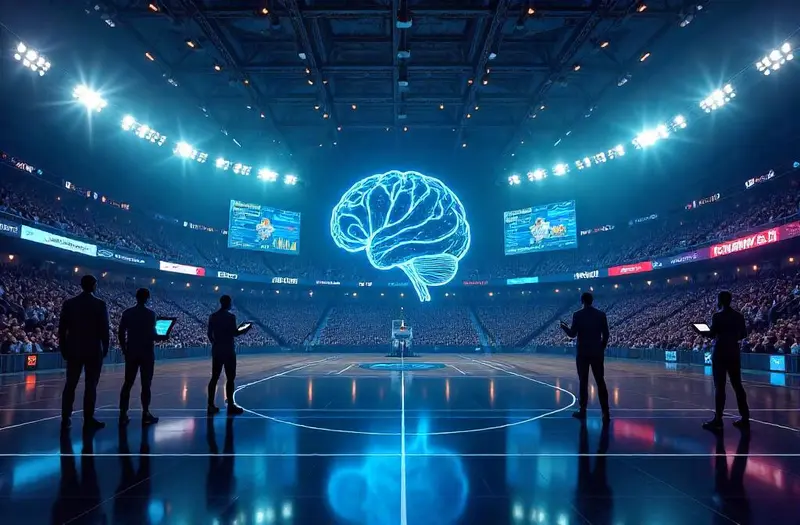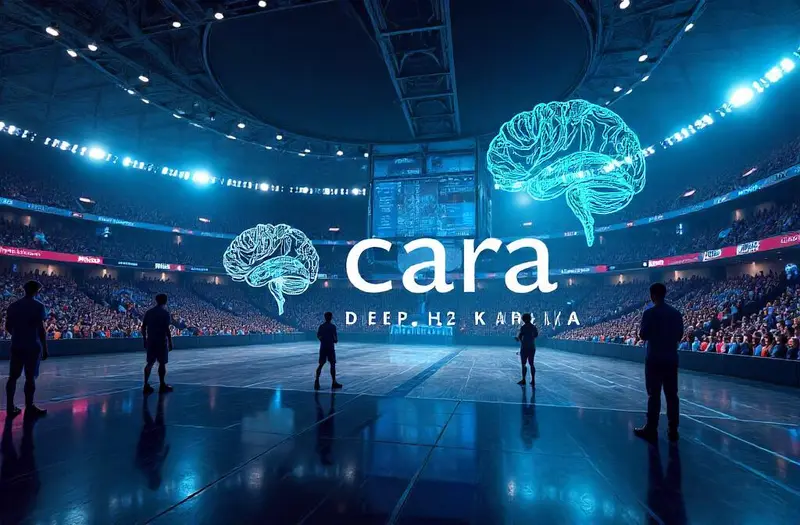How Deep Learning is Changing Sports Analytics and Predictions

Table of Contents
In the era of big data processing, intelligent algorithms like neural networks can analyse advanced statistics to predict scores, optimise teams, and even anticipate opponents’ strategies. This approach has significantly transformed sports analytics and predictions, enhancing efficiency, accuracy, and data-driven decision-making.
How Deep Learning is Changing Sports Analytics and Predictions
The Evolution of Sports Analytics with Deep Learning
Traditional sports analysis once relied heavily on manual observation and simple statistical records. However, the emergence of deep learning has revolutionised how we interpret sports data. Now, every athlete’s movement, game pattern, and team dynamic can be mathematically modelled using advanced predictive algorithms.
1. Transition from Manual Analysis to Automation
Manual approaches are often time-consuming and prone to human bias. With deep learning, algorithms can process thousands of variables simultaneously, producing far more accurate real-time analysis. For example, athlete performance can now be assessed through computer vision to detect micro-details such as body positioning or sprinting speed.
2. Integration of Machine Learning and Sports Data
Machine learning allows us to combine various sports data sources, such as wearable sensors, video recordings, and GPS data. By processing big data, teams can build deeper predictive models, assisting decision-making in training strategies and player rotations.
3. NLP and Tactical Analysis
Natural Language Processing (NLP) is also used to analyse match reports, expert commentary, and even social media. This provides insights into team psychology and public sentiment, which can significantly influence match predictions.
More Accurate Match Predictions
Deep learning is transforming how we predict match scores. With predictive algorithms powered by deep learning, we can combine historical data, weather conditions, and current player performance to produce more accurate sports predictions.
1. Multi-Factor Predictive Models
Rather than relying on simple statistics, these models integrate complex factors such as player fatigue, injury history, and opponent strategies. Recent research shows that deep learning models can improve score prediction accuracy by 20–30% compared to conventional methods.
2. Real-Time Analysis on the Field
Edge computing technology enables real-time analysis directly on the field. This allows coaches to immediately adjust strategies during matches. For example, algorithms can detect weak spots in an opponent’s formation within seconds.
3. Comparing Team and Player Performance
Here’s a comparison table of manual versus deep learning sports predictions:
| Method | Prediction Accuracy | Analysis Speed | Data Complexity |
|---|---|---|---|
| Manual Analysis | 60% | Slow | Limited |
| Machine Learning | 75% | Moderate | Medium |
| Latest Deep Learning | 90% | Real-time | Highly Complex |
Optimising Athlete and Team Performance
Beyond predictions, deep learning plays a crucial role in optimising athlete performance. With data-driven sports analysis, training programmes can be tailored to be more effective while minimising injury risks.
1. Monitoring Physical Condition
Through biometric sensors integrated with deep learning models, we can monitor an athlete’s heart rate, sleep patterns, and fatigue levels. This data is used to design personalised and optimal training schedules.
2. Injury Prevention
Intelligent algorithms can detect early signs of injury risks. Data mining on training footage can identify inefficient movement patterns and alert coaches to adjust techniques.
3. Psychological and Mental Analysis
In addition to physical aspects, mental state affects performance. NLP is used to analyse interviews, team discussions, and athletes’ social media posts to understand their psychological condition.
The Future of Sports Technology
Advances in deep learning open the door to even more futuristic sports technologies. Sports predictions will not only become more accurate but also more personalised and interactive for fans.
1. A Deeper Fan Experience
With real-time analysis, spectators can view advanced stats and live predictions during matches. This creates a new, more engaging level of interaction in the sports world.
2. Integration of Virtual and Augmented Reality
In the near future, augmented reality will visualise athlete performance data directly into the viewing experience. Fans will see automatically curated highlights selected by intelligent algorithms.
3. The Era of Advanced Statistics
The use of LSI and predictive analysis enables the creation of deeper statistics, such as the probability of successful attacks or score predictions based on game momentum.
Challenges and Ethics in Predictive Analysis
Despite the benefits, the use of deep learning in sports also raises new challenges regarding privacy and ethics.
1. Athlete Data Protection
Collecting highly detailed biometric data raises concerns about privacy. Strict regulations are needed to ensure data is not misused by irresponsible parties.
2. Algorithmic Bias
If training data is imbalanced, algorithms can produce biased predictions. Therefore, it’s important to regularly validate models.
3. Dependence on Technology
Overreliance on machine learning-based predictions can lead teams to overlook human intuition. Balancing technology with coaching experience remains crucial.
FAQs
How does deep learning improve sports prediction accuracy? Deep learning processes complex, multi-factor data, increasing accuracy by up to 90% compared to manual methods.
Is athlete personal data safe in these systems? Security depends on regulation and encryption. Extra protection is needed to prevent data leaks.
Does this technology replace human coaches? No, it only supports coaches to make more data-driven decisions.
Can this technology be used in all sports? Yes, but its effectiveness depends on data availability and the type of sport being analysed.
Conclusion
Deep learning has revolutionised sports analytics, from match predictions and athlete performance optimisation to fan experiences. With big data processing and advanced predictive algorithms, the sports world is entering a new era that is more science and technology-driven. However, ethical and privacy challenges must be addressed to ensure maximum benefit.
Key Takeaways
- Deep learning improves sports prediction accuracy by up to 90%
- Real-time analysis helps coaches adjust strategies during matches
- Injury prevention and athlete performance optimisation become more effective
- Privacy and algorithmic bias challenges must be anticipated
- This technology enriches the experience for fans and audiences
Popular Tags
ADS SPACE HERE




